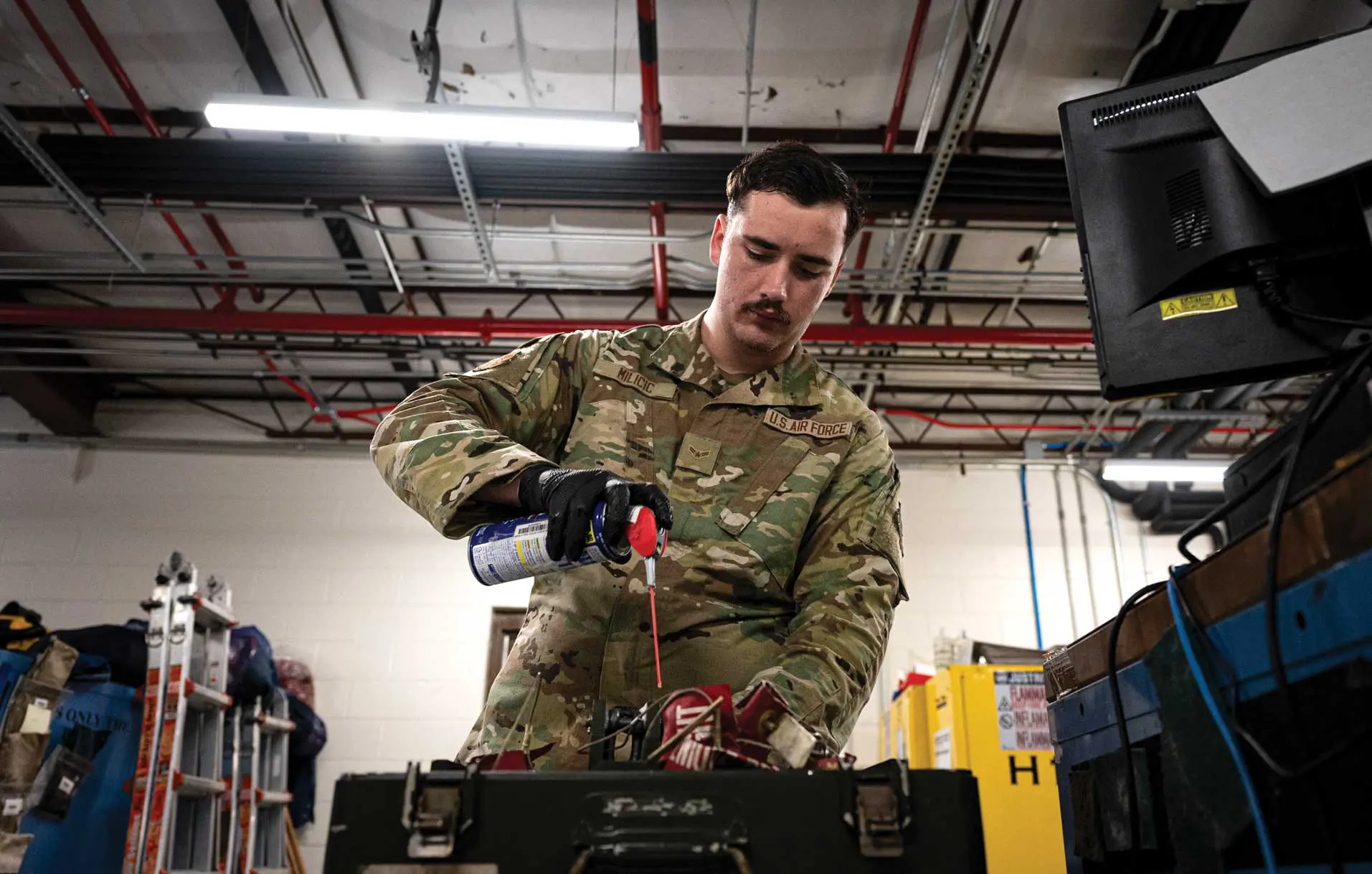What Every Aircraft Maintainer Needs to Know
By Mr. Lalo Maynes, AMC Flight Safety
As safety professionals, we have two basic roles: first, to be proactive, and second, to be reactive. Our task in proactive safety is to take a forward-thinking approach to preventing workplace injuries and fatalities by identifying and mitigating potential hazards before they occur. Our reactive role calls us to investigate to determine the root causes of mishaps to prevent recurrences. After a maintenance-related mishap occurs, investigators determine factors and findings and then form recommendations so that maintenance personnel will have background information from that mishap in the future, so they can recognize and avoid committing the same errors or mistakes. Every aircraft maintainer should be armed with this information, and herein lies the problem. Factors, findings, and recommendations in most USAF mishap safety reports are identified as privileged safety information (PSI), and Department of Defense and Air Force regulations restrict access to PSI.
Quarterly privileged flight safety briefings presented throughout the aircrew community—including Safety Investigation Board factors, findings, and causes—are longstanding and proven mishap prevention tools that quickly instill mishap lessons learned throughout the crew force. This safety briefing requirement has been mandatory for aircrews for many years in accordance with publication DAFI 91-202, The Department of the Air Force Mishap Prevention Program. However, it was not required for aircraft maintenance personnel until recently. Due to its effectiveness in the flying world, along with a rise in maintenance-related mishaps, Maj Gen Sean Choquette, the Air Force Chief of Safety, issued a directive in August of 2024 to include aircraft maintainers in the briefing requirement. The directive, Aviation Maintenance Privileged Safety Briefing and Training, became effective immediately.
Why is this process important to aircraft mechanics, and why is it such a priority in Air Force Safety? For mechanics across the USAF, knowing the results of current and past mishaps arms them with key takeaways pertaining to tasks they perform on their assigned aircraft. The findings in any USAF mishap report are written as a chronological sequence of events identified during the mishap investigation. Supplied with this information, aircraft mechanics can see the path the person encountered that led them to the actions or conditions that caused the mishap. In addition to numerous injuries in the past two years, the Air Force suffered two fatalities from maintenance-related mishaps. This longstanding prevention tool currently used to brief aircrews about lessons learned is effective, and we expect it will be just as advantageous in reducing maintenance-related mishaps.
So how do we, as safety professionals in the USAF, share PSI with aircraft maintenance Airmen before they step in to perform the same tasks that have resulted in mishaps in the past? Since February 2004, my goal has been to ensure that flight safety information is available to all maintainers, including the most junior aircraft maintenance technicians within the Air Mobility Command, so they do not commit the same errors previously identified in mishap investigations.
The last thing I want to do is tell an Airman who asked for mishap information that I cannot share PSI with them because they have not completed PSI training and signed a non-disclosure agreement (NDA). It is very important to ensure maintenance Airmen have access to PSI training and the NDA.
Some Airmen may be reluctant to sign an NDA if they are not sure of its intended use. I asked the Senior Attorney Advisor at the Air Force Safety Center, Mr. Daniel Vadnais, what the purpose of the NDA is. He gave me this friendly answer: “The non-disclosure agreement describes PSI and its authorized use, and the person’s signature acknowledges their understanding and agreement to use PSI only as authorized.” Vadnais further explained:
PSI is a unique tool, and we want to share that tool with these maintainers. But, before we can give it to them, they need to understand what it is and how it works, and they must agree to the rules for its use. This understanding comes from the training, and the agreement is the NDA. Air Force maintainers are the best in the world, and they can still do their job without this special tool, as they always have. But this tool can help them understand why they’re doing certain things, or why they’re doing them a certain way.
When aircraft maintenance personnel are trained to properly handle PSI, they are also trained to protect it effectively. After a mishap occurs, the Investigating Officer (IO) will interview each individual involved in the mishap sequence, and the IO must inform them that the Air Force does not use PSI as evidence for punitive, disciplinary, or adverse administrative actions. This information allows the interviewee to tell the IO what happened confidentially, without fear of repercussions. The IO needs truthful information to determine factors and findings, and the persons interviewed need to know that their frank and open communication will be protected in accordance with DoDI 6055.07, Mishap Notification, Investigation, Reporting, and Record Keeping, and DAFI 91-204, Safety Investigations and Reports, used solely for mishap prevention.
In summary, it is vital for aircraft maintenance personnel to have access to valuable mishap prevention information previously unavailable to them. Choquette’s directive to provide PSI training and recurring mishap safety briefings for all USAF aviation maintenance professionals immediately makes that access a reality. I want to extend a huge thank you to Maj Gen Choquette for issuing this directive and providing maintainers with this critical safety mishap information. Today, to those Airmen who now have the information every aircraft maintainer needs to know, I say sincerely and in a friendly gesture, welcome to Flight Safety!

